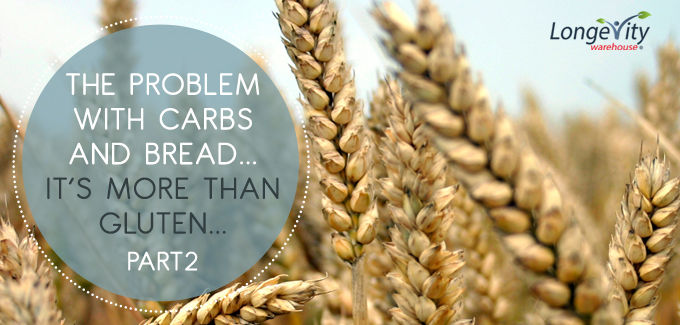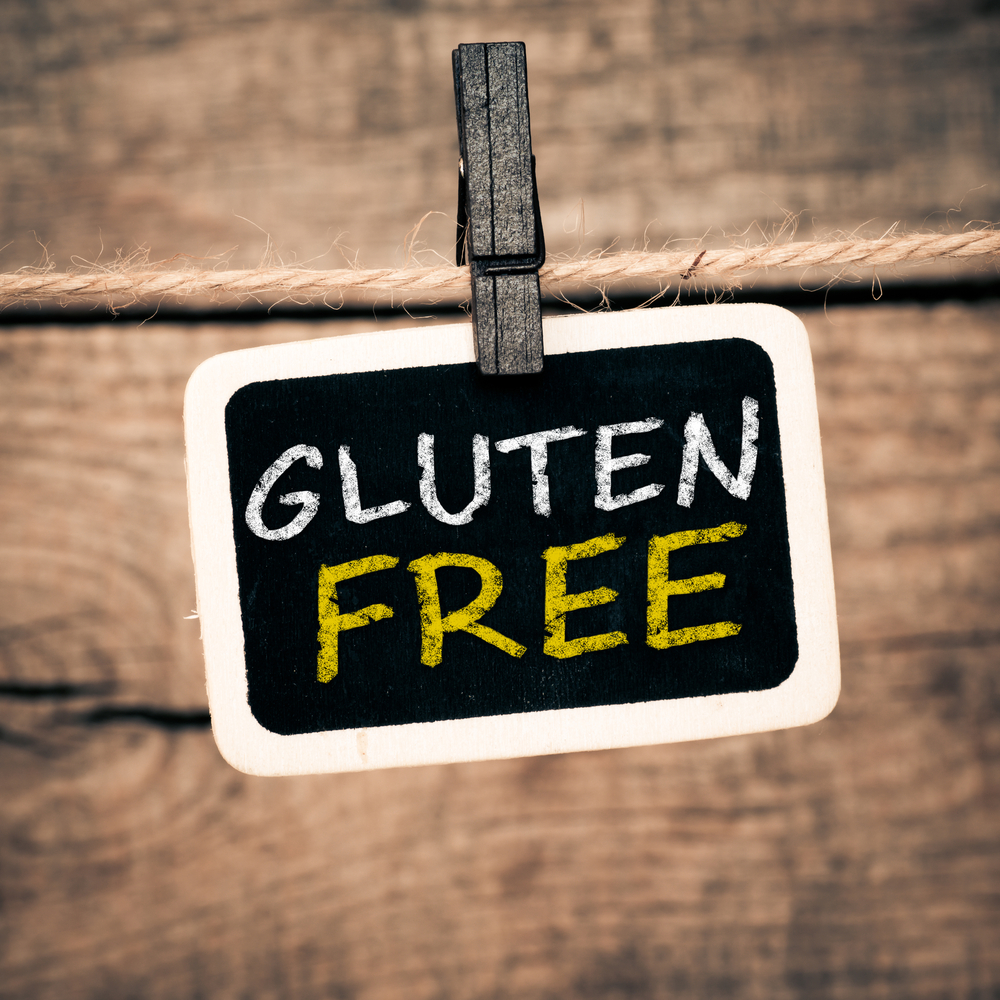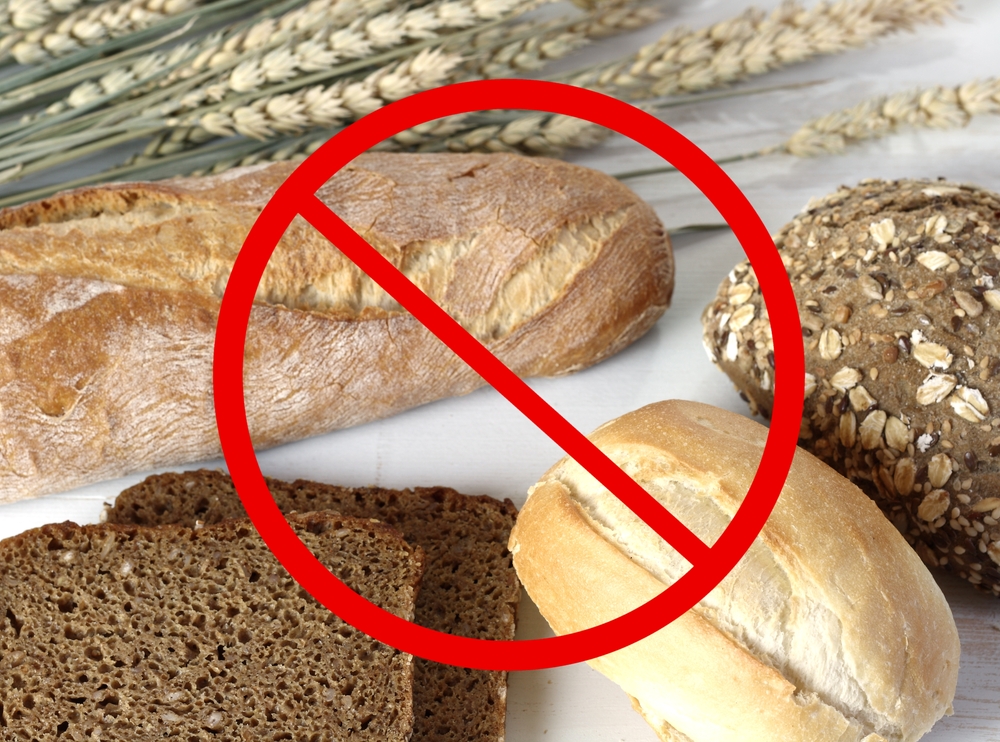
The Problem with Carbs and Bread… It’s More than Gluten… PART 2
by Colleen Cackowski
Up until recently, we have all been told that a diet rich in grains was good for us. If we are eating bread and bread products, especially those made with whole grains, shouldn’t that be okay?
Unfortunately, the answer is “probably not.” In PART 1 of this feature we focused on the physical and emotionally addictive properties of grains and carbs. Here in PART 2, we discuss the various other issues that are involved in eating too much bread and carb-laden food.
According to USDA dietary recommendations developed in the 1970s, carbohydrates, including grains, are recommended to constitute 45 to 65 percent of all calories consumed – the majority of our daily food intake. These same sugars and starches, found in everything that isn’t protein or fat, make up the essence of most peoples’ normal diet of bread, corn, cereals, potatoes, cookies, pasta, juice, soda, and fruit.
Since these USDA recommendations were formulated, there has been an explosion of obesity and diabetes in this country. At the heart of the problem was the misguided paradigm that eating too much fat makes you fat. What is now clear is that carbohydrates lie at the center of the obesity problem—not fat.
Now we are learning the importance of understanding the glycemic index of foods. The glycemic index is a way to measure how quickly the sugar in a food enters our bloodstream after we eat it. The quicker the sugar hits, the higher the glycemic index, and the more potential damage to our system.
Whole wheat bread and white bread actually have similar levels on the glycemic scale, 71 and 72, respectively. Both of these are higher than white table sugar (62)! The results of the glycemic index are not always what you might expect. A ‘healthy’ breakfast of Grape Nuts cereal (71) has a higher glycemic index than a Snickers candy bar (55).
More information about the Glycemic Index and a Table of many popular foods can be found here.
Negative Effects of Gluten
 A wheat-rich meal can cause stagnation in the digestive system, irritating the intestines and inflaming a hyper-immune response. One of the contributing factors to the problem with wheat is a sticky protein called gluten. We hear a lot about gluten, but who really understands what this means? The word “gluten” has its roots in the Latin word for glue. Remember as a kid when you mixed flour and water to form glue? That glue is what goes into your digestive tract when you eat anything with gluten. No wonder these types of products clump up the digestive system!
A wheat-rich meal can cause stagnation in the digestive system, irritating the intestines and inflaming a hyper-immune response. One of the contributing factors to the problem with wheat is a sticky protein called gluten. We hear a lot about gluten, but who really understands what this means? The word “gluten” has its roots in the Latin word for glue. Remember as a kid when you mixed flour and water to form glue? That glue is what goes into your digestive tract when you eat anything with gluten. No wonder these types of products clump up the digestive system!
Once digested, wheat makes the blood thick; slowing circulation also encourages the growth of yeast and fungus. Undigested wheat becomes gooey fecal matter and gets stuck in the intestines, sometimes for weeks, where it ferments. This process is what can make you feel bloated for a couple of days after eating too much wheat or flour.
Other Problems with Grains
But gluten is not the only problem with wheat. Eating too many grains can cause other nutritional issues.
Blood Sugar: Carbs, like bread, are generally comprised of chains of simple sugars so when these chains are broken down, they cause a serious spike in blood glucose levels. After this rapid digestion of sugars, blood glucose levels quickly plummet, resulting in a cycle of hunger and additional carb cravings. Grains also contain Amylopectin A, a supercarb that raises blood sugar even more than table sugar or most any other carb. For example, two slices of whole wheat bread actually raises blood sugar more than six teaspoons of sugar would! Plus… a couple of hours after eating too many carbs and you’re bound to be rummaging through the fridge again so see what’s there to eat.
Nutritional deficiency: Phytates in grains block the absorption of iron and zinc by up to 90%. And, during processing, most of the healthy elements of grains are removed, leaving just the acid-forming, nutritionally deficient carb load for your meal.
Obesity: Gliadin is another protein in wheat which acts like an opiate and stimulates appetite. Because of gliadin, the average person consumes 400 MORE calories per day than a person who does not include grains in their diet. Over a year, that can add up to a serious amount of weight! Gliadin can also contribute to behavioral problems in children with ADHD, regardless of whether there is gluten sensitivity present.
Mucus: All of the refined grains (Wheat, Oats, Rye, Barley, Spelt, etc.) produce mucus in the body. Our body makes mucus as a natural defense mechanism to protect our cells, tissues, and organs from the harmful acids found in these products. While the mucus is meant to protect us, it has the side effect of making our lungs and nasal passages become congested and hindering digestion.
Breaking a bread addiction can be challenging, but the benefits to your health are worth it. Start slowly by giving yourself a break from bread for two weeks. You might even find that your cravings reduce or disappear altogether after a week or so.
Watch out for PART 3 to get more ideas on how to beat a carb addiction…


+ There are no comments
Add yours